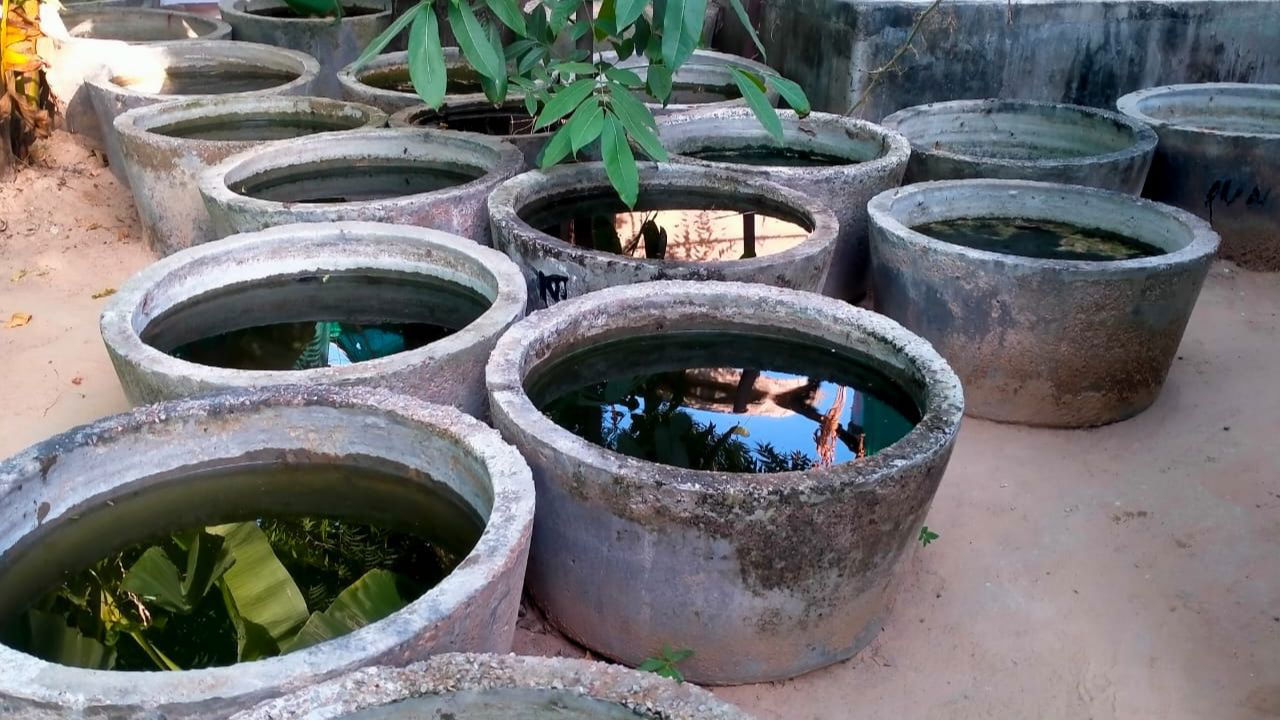
Narendra Kumar Girwa, a man from the small town of Renwal in Rajasthan, was once like many others, working hard to make ends meet. He ran a stationery business, selling books and supplies, but progress seemed out of reach no matter how much effort he put in. The losses piled up daily, and the future looked uncertain. Yet, Narendra wasn’t the kind of person to give up. Deep down, he knew there had to be something more, something different he could do.
His journey took a transformative shift when he discovered the potential of pearl farming, ultimately leading him to become a notable figure in the aquaculture industry. His story serves as a testament to the power of determination, research, and the willingness to take risks.
Turning Point of Life: Narendra's Entrepreneurial Journey
Narendra came from a humble background and initially ran a stationery business. Despite his hard work, the business was unprofitable, and he incurred losses amounting to Rs 4–5 lakhs. Disheartened but not defeated, Narendra began searching for new business ideas online. While browsing, he stumbled upon the concept of pearl farming, which piqued his interest. After researching the idea further, Narendra realized that pearl farming was still a relatively unexplored venture in Rajasthan. Seeing this as an opportunity, he decided to give it a shot despite having no prior experience.
Knowing that success in pearl farming required specific skills and knowledge, Narendra sought proper training. His search led him to the Central Institute of Freshwater Aquaculture (CIFA) in Bhubaneswar, Odisha, a branch of the Indian Council of Agricultural Research (ICAR). Narendra attended a five-day training course at CIFA, where he learnt the essentials of pearl growing, determined to achieve the competence required to launch his new enterprise.
In an exclusive interview with Krishi Jagran, Narendra shared insights into his journey, revealing that he began pearl farming with an initial investment of just Rs 30,000–35,000. On a modest 300-yard plot, he built ponds to nurture the oysters and sourced high-quality oyster seeds from fishermen in Kerala, Gujarat, and Mumbai. This careful planning and sourcing laid the foundation for his successful venture into pearl farming.

Overcoming Challenges: Early Setbacks in Pearl Farming
Like any new business, Narendra faced several challenges at the beginning of his pearl farming journey. Out of his initial batch of 500 oysters, only 35 produced pearls, yielding 70 pearls in total. While the initial results were far from satisfactory, Narendra was not discouraged. He realized the importance of refining his methods and using better technology to ensure higher yields. With continued training, research, and perseverance, Narendra improved his farming techniques, which helped him overcome these early setbacks.
Breakthrough: Success in Pearl Farming
Narendra’s persistence soon began to pay off. By improving his farming methods and carefully managing the oysters, he began to produce high-quality pearls. He scaled up his operations by purchasing more oysters- about 3,000 shells at a time- and tending to them for 15 to 18 months. His efforts resulted in the production of 4,000 pearls from each batch of 2,000 oysters.
Narendra’s earnings from pearl farming grew steadily. From an initial income of Rs 2 lakhs in the first year, he gradually increased his profits, earning between Rs 10-16 lakhs annually. The key to his success was the ability to produce designer and round pearls in high demand in the jewellery market.

Building a Brand: From Local Farmer to National Trainer in Pearl Farming
Narendra’s success in pearl farming did not go unnoticed. As his reputation grew, people from across India started seeking his guidance in pearl farming. Narendra embraced this new role by offering training programs, and he has since trained over 250 individuals from various states, including Rajasthan, Haryana, Uttar Pradesh, and Punjab.
He even founded the Alkha Foundation to formalize his training efforts, which now help people start their pearl farming ventures. His success has attracted attention within India and from countries like Nepal, Bhutan, Dubai, and Romania, where he is invited to set up pearl farming projects.
Narendra believes that pearl farming has immense potential, especially if done on a large scale. His current annual income of Rs 4–5 lakhs from a small unit can easily increase if the scale of operations grows. The increasing demand for natural pearls in jewelry markets makes this a lucrative business for young entrepreneurs.

A True Inspiration in Pearl Farming
Narendra Kumar Girwa’s journey from a struggling bookseller to a successful pearl farmer and entrepreneur is an inspiring tale of resilience and innovation. He has proven that with the right knowledge, dedication, and willingness to embrace new technologies, even an unconventional field like pearl farming can lead to remarkable success. Today, Narendra’s pearls are prized both in India and internationally, making him a pioneer in modern pearl farming.
-
Is pearl farming profitable?
Yes, pearl farming can be highly profitable, but its success depends on factors like the quality and quantity of pearls, market demand, farming techniques, and operational costs. With effective planning, proper management, and the use of best practices, farmers and investors can achieve substantial returns from pearl farming.
















